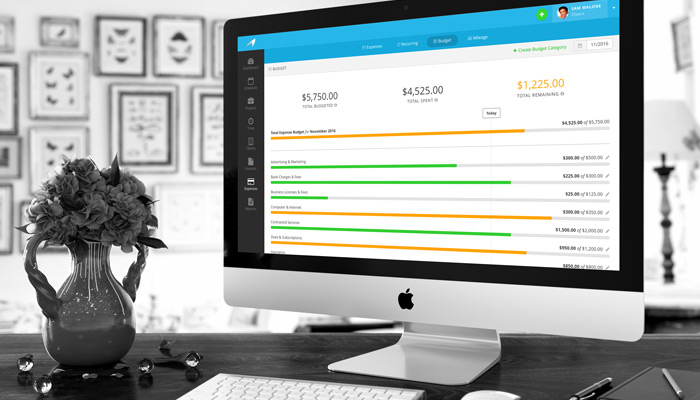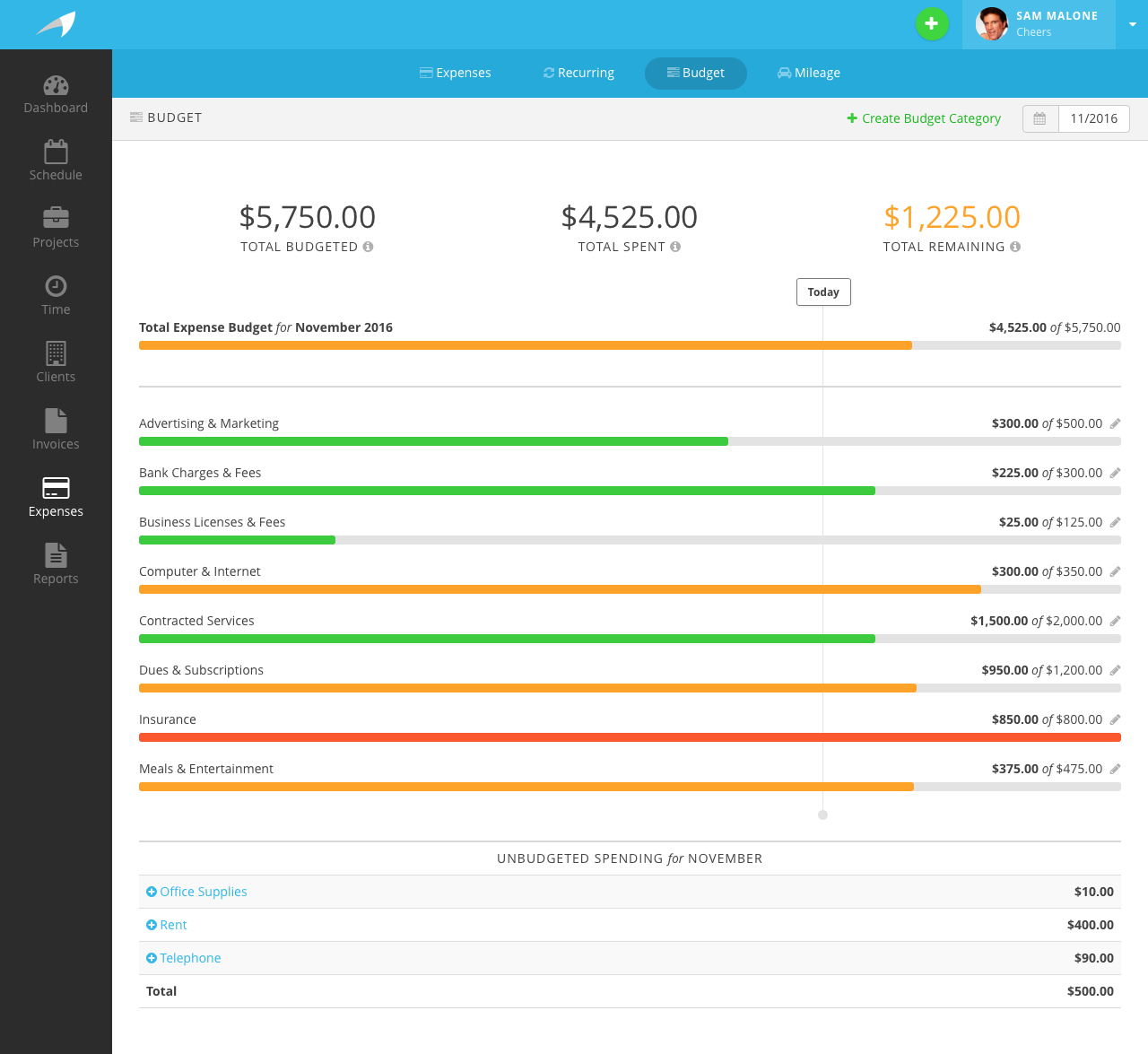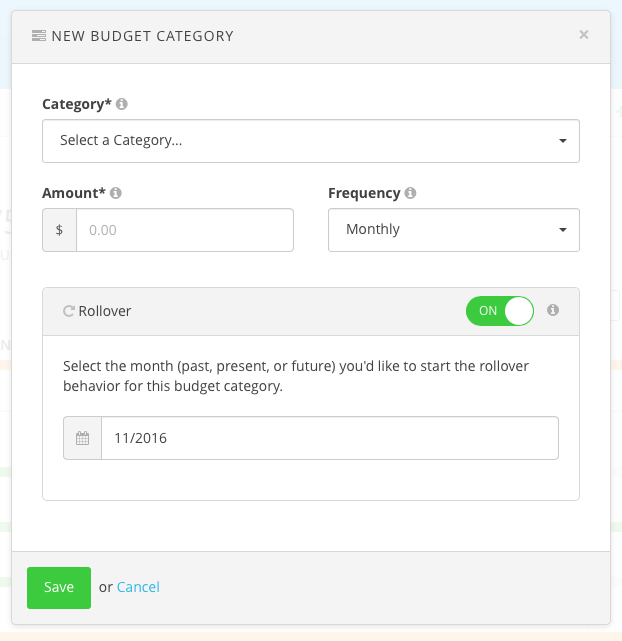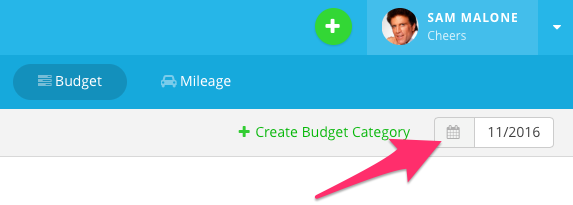
Every feature we release for Harpoon ultimately leads back to helping you set, track, and achieve the financial goals you have for your business. Sometimes that means a feature will help you to get paid. Other times it means helping you manage the money you already have. Today's announcement falls into the latter category. We’re excited to introduce Expense Budgeting to the Harpoon platform!
Budgeting your expenses is a proven way of bringing discipline and control to your spending habits. The truth is the amount of money coming in is somewhat meaningless if there isn’t a plan in place for how that money is ultimately utilized or spent. The lack of a spending plan is why so many businesses struggle to stay profitable, even when making what appears to be plenty of revenue. A budget is a powerful tool to help you plan and set limits on the expense categories your business spends money on.
There are dozens of budgeting apps for personal finances. And we’ve talked with plenty of Harpoon customers and fellow business owners who have struggled to figure out how to make those budgeting apps for personal finances work for their business finances. Business owners have come up with creative hacks and workarounds just to keep their personal finances separate from their business finances in these apps. We’ve struggled with the same over the years. So we jumped at the chance to build an expense budgeting tool into Harpoon that focuses on your business. Here’s how it works:
Since you’re already tracking all of your business expenses in Harpoon, budgeting for those expense categories is easy to do. First, you’ll find a new Budget screen within the Expenses section of Harpoon.

The Budget screen is a monthly view where you can plan the amount of money you’d like to spend for any of your expense categories. Harpoon will then display the amount of money you’ve actually spent in each category compared to how much you planned to spend. Progress bars make it easy to see at a glance which categories are close to being maxed out.
First you’ll need to decide which expense categories you’d like to budget for. You can start budgeting for a category by clicking the “Create Budget Category” action at the top of the screen.

This triggers the New Budget Category form which is quick and easy to fill out.

Here are a few quick tips when filling out the form:
- Category: Your budget categories are based on the expense categories you already have set up in your Harpoon account. Select which category you’d like to budget for.
- Amount: How much money do you want to budget for this category?
- Frequency: How often do you need to budget for the amount of this category? Since the Budget screen is a monthly view Harpoon will calculate a monthly average amount for you based on the frequency you select. For example, if the category is a weekly expense in the amount of $10, you can set the Amount to $10, the Frequency to Weekly, and Harpoon will set a monthly budget of $43 for that category.
- Rollover: If you're under budget for the month in this category a Rollover will take the leftover amount and add it to the next month's budget, giving you more available to spend in this category for that month. This is handy for budgeting an average amount of spending over multiple months.
After saving the form you’ll see your new budget category displayed on the page, already being tracked with any spending for the month.
You can move forwards and backwards in time using the date picker at the top of the Budget screen.

This allows you to view your spending habits over time. If at any point you need to make an adjustment to a budget category you can click the Edit icon next to the category’s spending stats.

At the bottom of your Budget screen you might notice an Unbudgeted Spending table.

This represents any expenses recorded for the month that haven’t yet been budgeted for. For example, maybe you haven’t yet created a budget category for Office Supplies. But you notice by looking at the Unbudgeted Spending table that your business seems to consistently spend money in that category from month to month. It might be wise to budget for that category. You can easily do so by clicking the name of the category in the Unbudgeted Spending table and adding this expense category to your list of other budget categories higher up on the page.
As the days of the month roll on check in on your Budget a few times a week. See if your actual spending is within the limits of what you planned. Look back in time to see if there are any categories in which you’re consistently overspending. Maybe you need to increase your budget amount for that category. Or maybe you need to be more disciplined with your spending. You might even notice you’re consistently underspending in a category and can afford to lower its budget amount.
Ultimately your Budget isn’t meant to be an overly legalistic burden. Instead it’s a tool to help you plan a ballpark, monthly amount of spending required for your business, with the ability to monitor your success (or failure) of sticking to that plan. Then it's up to you to adjust your plan or behavior accordingly.
Have fun setting up your Budget! We hope you’ll find this to be a powerful tool for helping your business stay profitable, and as a result achieving your financial goals!







